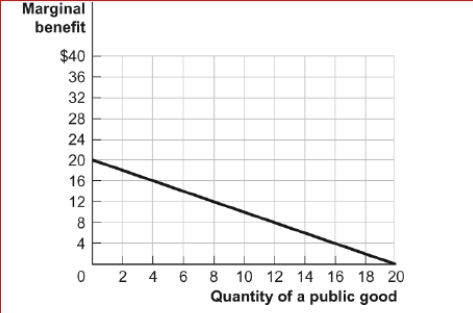Figure: An Individual's Marginal Benefit from a Public Good 
 (Figure: An Individual's Marginal Benefit from a Public Good) Look at the figure An Individual's Marginal Benefit from a Public Good.Assume that two individuals will share consumption of a public good; each individual has the same marginal benefit curve as the one shown in the figure.If the marginal cost of the good is $8, what is the level of this public good that will maximize society's welfare?
(Figure: An Individual's Marginal Benefit from a Public Good) Look at the figure An Individual's Marginal Benefit from a Public Good.Assume that two individuals will share consumption of a public good; each individual has the same marginal benefit curve as the one shown in the figure.If the marginal cost of the good is $8, what is the level of this public good that will maximize society's welfare?
Definitions:
Problem Solving
The process of identifying a challenge and finding an effective solution to overcome it.
Spring Formal
A social event or dance typically held in the spring, often by schools or colleges, where attendees dress in formal wear.
Forming Subgoals
The strategy of breaking down a primary goal into smaller, more manageable objectives or tasks to facilitate achievement of the main goal.
Heuristic
Cognitive strategies or "rules of thumb" used for problem-solving that are not guaranteed to be optimal or perfect but are sufficient for reaching an immediate goal.
Q50: The best example of a common resource
Q71: Figure: Firms in Monopolistic Competition<br>(Figure: Firms in
Q76: Suppose the production of roses generates a
Q94: Environmental standards ensure that the marginal benefit
Q149: Assume that Stan just received a promotion
Q149: Which of the following is an environmental
Q161: Imposing a Pigouvian tax on a good,
Q166: If government officials set an emissions tax
Q182: (Table: Marginal Benefit from Additional Streetlights) Dave
Q227: An example of a public good is:<br>A)a